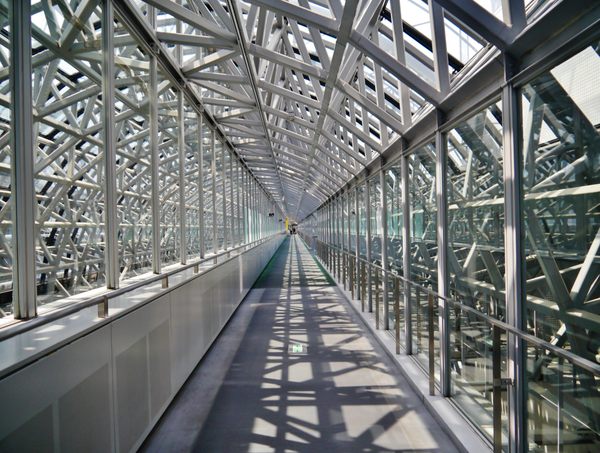There are two opposing strands running through Japan’s built environment. One is the traditional architecture of wooden beams and sliding doors that is redolent of a world of tea ceremonies and temples. The other is the modern concrete and glass cityscape that inspired the cyberpunk novelist William Gibson to set his Sprawl Trilogy in a futuristic, dystopian Chiba City.
Kyoto is world famous for the former, but is also home to one of the country’s most striking examples of postmodernist architecture. Kyoto Station—the country’s second-largest—is a glass and steel icon. The chances are that you will pass through it when visiting the city, but unless you look closely you might miss one of its best features. Perched high above the ticket hall is a walkway, accessed through an unobtrusive door on the building’s 11th floor, that offers some excellent views of the city skyline and the station itself.
The Skyway runs the length of the station and serves the practical purpose of allowing visitors to walk from the west to the east ends. It also provides north-facing views across Kyoto, including of Kyoto Tower, which are actually better than those from the more famous Sky Garden, which is located on the 15th floor but has tinted glass windows.
As well as looking out over the city, you will also be able to look down at the ticket hall, which from that height resembles a giant canyon. Take note of the huge staircase, which is lit with LED lights that change depending on the season. Looking up at the station roof, you will notice the mesh of exposed steel girders affectionately known as “the Matrix” (intriguingly, The Matrix film was inspired by one of William Gibson’s Sprawl trilogy). The view is impressive at any time, but is most striking when it’s dark and the station is bathed in LED and neon light, completing the cyberpunk aesthetic.

